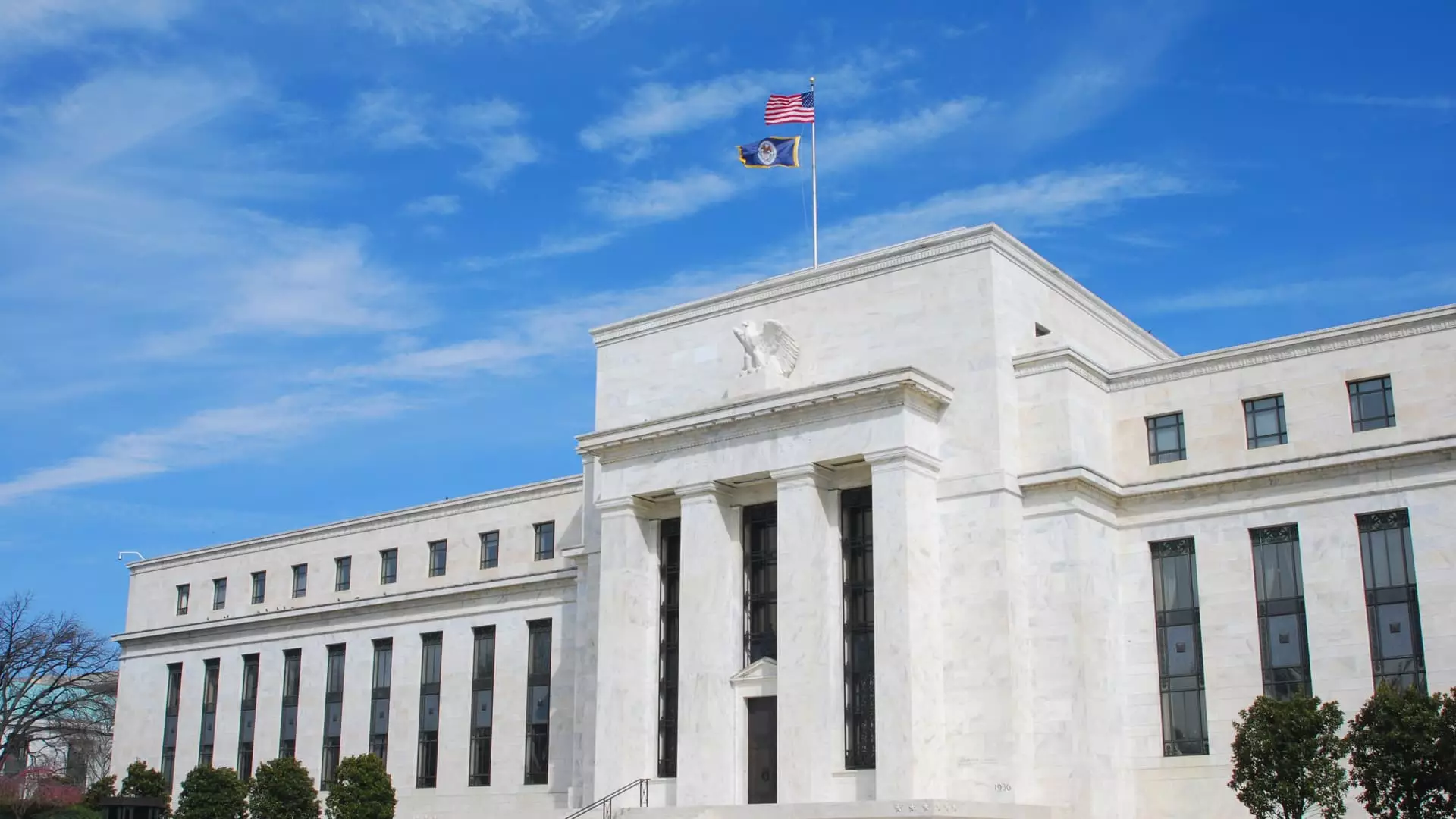As the Federal Reserve gears up for its next two-day meeting, there’s a palpable tension in the air. Market analysts widely expect a steady hold on interest rates, even as headlines sing a siren’s song about falling inflation rates. This seemingly benign stance, however, is not without its strings. While inflation may have receded in recent data, the shadows of an escalating trade war loom large, sending warning bells ringing for consumers everywhere. Trade policies of this nature could ignite a new inflationary wave, placing impossible pressures on everyday Americans.
Let’s not forget the words of Andrzej Skiba from RBC Global Asset Management, who has articulated a significant fear that this is merely the initial phase of widespread tariff implementation. The implications on prices for vital consumer goods could be immense. The worrisome trade negotiations are already impacting perceptions and realities; when tariffs increase, consumer prices often follow suit. The potential inability of the Fed to cut rates in this precarious situation bodes ill for Americans already stretched thin financially.
Consumers Stretched Thin
It’s crucial to understand the broader symptom of economic malaise brewing beneath the surface. As Greg McBride from Bankrate so aptly pointed out, consumers are feeling both stretched and stressed. This anxiety manifests in various forms, but the crux of the matter remains the rising cost of living against stagnant wages. When the federal funds rate remains unchanged, consumers may initially experience a false sense of relief, believing that no new rate hikes could signify stability. However, stability feels like a luxury they cannot afford when faced with unyielding debt.
Beneath its surface, the financial landscape is a fluctuating sea of borrowed money. The Federal Reserve’s decisions significantly impact consumer borrowing and savings rates. Although there’s optimism regarding mortgage and auto loan rates trending lower, it’s disheartening that many consumers are still grappling with elevated rates compared to historical standards. The irony is stark: as consumers seek relief through the borrowing they need to sustain their lives, they’re met with interest rates that hardly reflect the groundwork of any economic recovery.
Economic Pressure on Housing Markets
Take a moment to appreciate the current conditions in the housing market, which stay echoingly high despite a dip in mortgage rates. Currently sitting at an average of 6.77% for a 30-year fixed mortgage, this rate might seem marginally better than earlier in the year, but it does little to alleviate the crushing reality faced by potential homebuyers. The complexity lies in the fact that even as rates dip, the ongoing anxieties surrounding possible recessions, alongside President Donald Trump’s tariff strategy, create tremors in consumer confidence.
As noted by Matt Schulz from LendingTree, there is an unusual juxtaposition between the Federal Reserve’s relative silence on interest rate cuts and the declining mortgage rates. While the latter brings some optimism for prospective homeowners, the bigger picture showcases a market segment constrained by ever-rising prices and the psychological toll of uncertainty. With mortgages so tightly wound to the broader economy and consumer confidence wavering, the question remains: how long before these pressures crystallize into a major downturn?
The Price of Debt: A Looming Crisis
The reality of revolved debt in America is alarming. An 8.2% year-over-year rise in credit card debt illustrates the burden on consumers, while non-revolving debt exhibits a modest 3% increase. This is not merely an economic statistic; it represents a hegemonic struggle many face in their daily lives. High prices combined with stagnant wages are pushing individuals to live on credit—a vicious cycle that breeds further instability.
The implications of the unending cycle of inflationary pressures and high credit card interest rates are waiting to rear their ugly head. As average credit card rates drop slightly, currently resting at 20.09%, they remain firmly entrenched above historical norms. This trend is especially worrisome for consumers who may find themselves accumulating more debt as borrowing costs remain high. It’s critical to understand that until consumer conditions substantially improve, the financial landscape will be mired in strife.
The Silver Lining: Savings Amid Tumultuous Times
If one looks hard enough, there are indeed silver linings against this tapestry of economic uncertainty. Online savings accounts currently offer an average interest rate of 4.4%, levels not seen in over a decade. This aspect of the economy serves as a glimmer of hope for those cautious about their financial futures. While the Fed’s inertia brings unwelcome stresses to the borrowing climate, consumers, through prudent saving, can still find ways to navigate through the turbulent seas of debt.
As the Federal Reserve’s approach signals a cautious attitude toward interest rate intervention, it unveils a complex landscape that continues to evolve. The crux of the issue lies in consumer sentiment and their ability to sustain through rising costs paired with unstable income levels. The focus must shift from austere measures to fostering real economic growth—drawing a clearer narrative forward for consumers. Ultimately, facing down economic uncertainty requires a cohesive approach that aligns the interests of both the individual and the economy at large.

